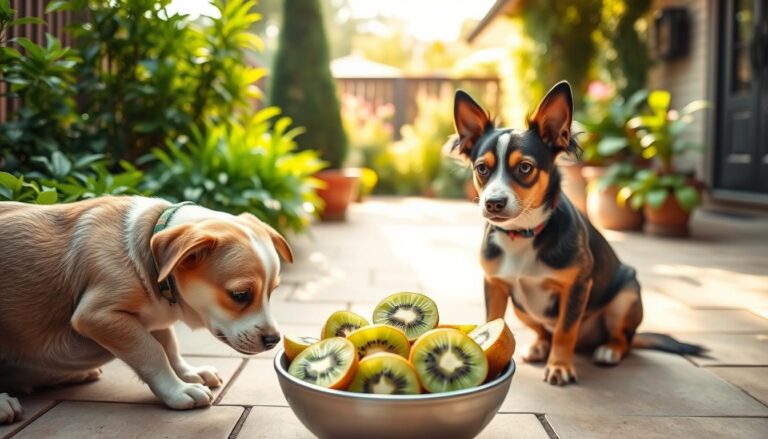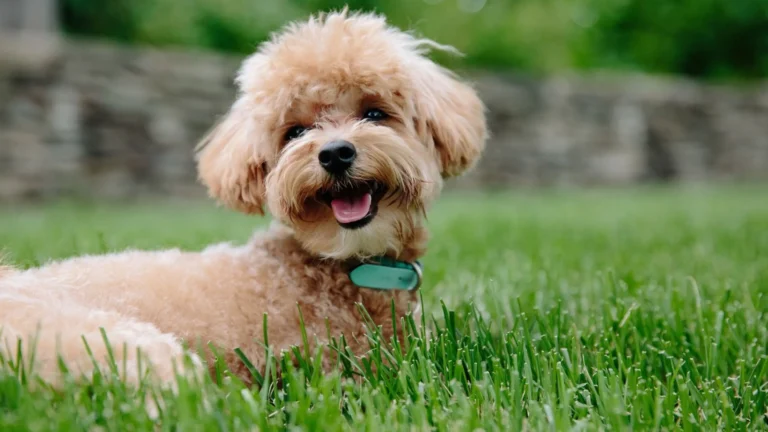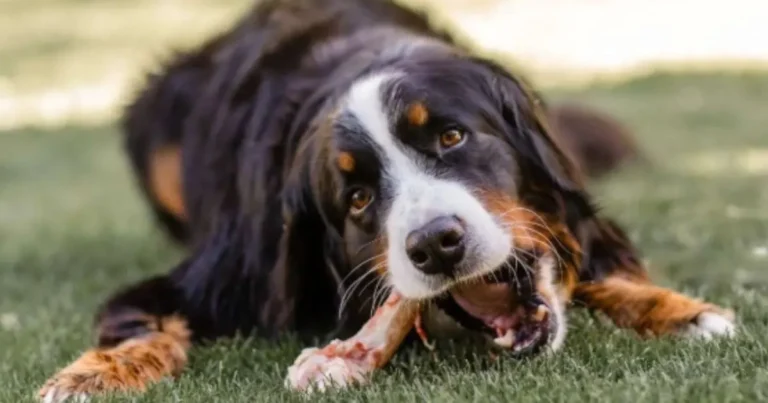How Do Dogs Mate? A Simple Guide for Dog Owners
As a dog owner, you may often wonder, how do dogs mate and what truly happens during this natural process. Dog mating is a fascinating display of instinct and biology, guided by behaviors that have evolved over thousands of years.
Understanding how do dogs mate isn’t just about curiosity—it’s essential knowledge for responsible pet owners and breeders who want to ensure their dogs’ health and well-being. Each stage of the mating process, from attraction to the tie, plays a vital role in successful reproduction.
In this guide, we’ll explore the biological, behavioral, and environmental factors that influence canine mating. Whether you’re a breeder or simply a curious owner, this knowledge will help you make informed decisions and support your dog’s reproductive health.
Table of Contents
The Biology Behind Dog Mating
Canine reproduction is a complex process that ensures successful breeding. It’s fascinating to learn about the intricate mechanisms of dog mating. This knowledge helps breeders and pet owners understand dogs’ remarkable reproductive abilities.
Understanding the Reproductive System
The reproductive system of dogs is different for males and females. Both are crucial for successful breeding.
- Male dogs have specialized reproductive organs for mating
- Female dogs go through cyclical reproductive changes
- Unique anatomical structures support the mating process
Hormonal Changes During Mating
Hormones play a key role in canine reproduction. Testosterone in males and estrogen in females trigger specific responses. These prepare them for breeding.
Key hormonal triggers include:
- Luteinizing hormone stimulates reproductive activity
- Progesterone regulates female fertility cycles
- Testosterone influences male mating behaviors
Physical Adaptations for Breeding
Dogs have unique physical adaptations for breeding. The bulbus glandis, a gland in male dogs, swells during mating. This creates a temporary connection with the female, ensuring successful sperm transfer.
These biological mechanisms show the sophisticated nature of dog breeding. They highlight the intricate balance of physiological processes that enable successful reproduction.
The Heat Cycle and Its Stages
Knowing about a dog’s reproductive cycle is key for pet owners. The breeding season for dogs has many stages that show when a female dog is ready to breed. Unlike humans, dogs have a cycle that needs careful watching and handling.
The heat cycle of dogs has four main stages, each with its own traits:
- Proestrus: The first stage, lasting 7-10 days
- Estrus: The most fertile time, lasting 5-9 days
- Diestrus: Either pregnancy or recovery
- Anestrus: The rest period between cycles
Hormonal changes affect a dog’s behavior and body during the reproductive cycle. Female dogs usually go into heat twice a year. But, smaller breeds might go more often. The length and strength of the cycle can change based on breed, age, and health.
“Knowing your dog’s heat cycle is key to preventing unplanned pregnancies and understanding your pet’s reproductive health.” – Veterinary Reproductive Specialists
Each stage of the breeding season for dogs has its own signs. You’ll see changes in vaginal discharge, swelling, and behavior. Watching these signs helps you care for your dog and make smart choices about breeding or preventing pregnancy.
Vets suggest keeping track of your dog’s reproductive cycle for their health. Regular vet visits and knowing these stages help support your dog’s reproductive health.
How Do Dogs Mate: Step-by-Step Process
Learning about dog mating is interesting. It shows how biology and behavior work together for reproduction. Dogs have a special way of mating that involves many steps and signals.
Dogs don’t just mate physically. They have a complex ritual that includes communication and special biological steps. These steps help ensure they can breed successfully.
Initial Attraction and Courtship
When dogs are ready to mate, they show certain signs. Female dogs release pheromones that attract males. Males show interest by:
- Intense sniffing
- Increased attention to the female
- Restless behavior
- Marking territory more frequently
The Mounting Process
During the mounting phase, males position themselves behind females. They place their front legs on her back. This helps them mate successfully.
- Male aligns with female’s body
- Achieves penetration
- Maintains physical contact
The Copulatory Tie
The copulatory tie is one of the most unique stages in the mating process. During this phase, the male and female remain connected for about 10 to 45 minutes after mating, which helps improve the chances of successful fertilization.
Understanding this stage and other behaviors involved in how do dogs mate helps dog owners and breeders promote healthy, responsible breeding practices.
Understanding the Breeding Tie
When dogs mate, a special process called the breeding tie happens. This is key for them to reproduce successfully. The male’s penis swells inside the female, making a connection that helps with sperm transfer.
The breeding tie is important for several reasons. It keeps the male from pulling out too fast, which helps with fertilization. This connection usually lasts from 15 to 30 minutes, keeping both dogs together.
- The tie occurs when the bulbus glandis (a part of the male dog’s anatomy) swells
- Female dogs experience involuntary muscle contractions during this phase
- The process helps ensure successful sperm delivery
Dog owners should stay calm during the breeding tie. Trying to pull them apart can hurt them and damage their reproductive parts. Instead, give them a quiet, comfy place to be alone.
“Nature has designed this unique mating mechanism to increase the likelihood of successful reproduction in canines.” – Veterinary Reproductive Specialist
| Breeding Tie Characteristics | Details |
|---|---|
| Average Duration | 15-30 minutes |
| Purpose | Maximize sperm transfer and fertilization chances |
| Physical Mechanism | Swelling of male’s bulbus glandis |
Knowing about the breeding tie helps dog owners understand canine reproduction better. It shows how natural this process is. By understanding it, you can support your dogs during mating and make it safe and stress-free.
Physical Signs of Mating Readiness
Understanding when a dog is ready to mate requires careful observation. The breeding season brings about physical and behavioral changes. These signs help pet owners and breeders know when it’s time.
Female Dog Indicators
Female dogs show clear physical changes during their cycle. Key signs include:
- Swollen vulva with noticeable enlargement
- Reddish-pink vaginal discharge
- Behavioral changes like tail flagging
- Increased urination frequency
Male Dog Behaviors
Male dogs have unique behaviors during the breeding season:
- Heightened restlessness and agitation
- Increased territorial marking
- Persistent attempts to escape and locate potential mates
- Intense focus on female dogs in heat
Optimal Timing Signals
| Stage | Duration | Mating Readiness |
|---|---|---|
| Proestrus | 7-10 days | Not yet ready |
| Estrus | 5-9 days | Peak fertility window |
| Diestrus | 60-90 days | Mating no longer possible |
Knowing these exact signals is key to successful breeding. It also helps manage your dog’s reproductive health.
Essential Health Considerations Before Breeding
Starting a dog breeding program requires thorough health screenings. Before you start, make sure both dogs are in top shape. This is key to raising healthy puppies and keeping the parents safe.
Important health checks for breeding dogs include:
- Genetic disease screening
- Complete veterinary physical examination
- Age-appropriate reproductive health assessment
- Vaccination status verification
- Parasite control evaluation
Vets suggest specific tests based on the dog’s breed. These tests spot genetic risks that could affect future puppies.
| Health Screening Type | Purpose | Recommended Age |
|---|---|---|
| Genetic Testing | Identify inherited disease risks | Before first breeding |
| Hip Dysplasia Screening | Evaluate joint health | 2 years and older |
| Eye Examination | Check for inherited eye conditions | Annually |
Nutrition is crucial for breeding dogs. A good diet with all the right nutrients helps with breeding. Keeping dogs at a healthy weight is also vital for successful breeding.
“Health is the foundation of responsible breeding” – Veterinary Reproductive Specialists
Don’t take breeding lightly. Thorough health checks are not just for the dogs. They also help the breed’s overall health.
The Role of Environment in Successful Mating
The dog mating process is greatly affected by the environment. The right setting is key to successful breeding. It’s important to know how surroundings impact mating behavior in dogs.
For successful dog reproduction, the environment matters a lot. Breeding dogs are very sensitive to their surroundings. This can greatly affect their reproductive performance.
Creating the Ideal Mating Environment
When preparing for dog mating, consider these key environmental elements:
- Choose a quiet, familiar location
- Minimize external distractions
- Ensure comfortable temperature
- Provide a secure, calm space
Managing Stress Factors
Stress can greatly disrupt the dog mating process. Dogs are very sensitive to their environment. Too much stress can stop successful breeding.
| Stress Factor | Potential Impact | Mitigation Strategy |
|---|---|---|
| Unfamiliar Locations | Reduced Mating Willingness | Use familiar, neutral territory |
| Loud Noises | Increased Anxiety | Select quiet breeding area |
| Multiple Observers | Performance Anxiety | Limit audience to essential personnel |
Temperature and Timing Considerations
Optimal breeding conditions involve careful temperature management. Extreme heat or cold can negatively impact mating behavior in dogs. Aim for a moderate, comfortable environment that allows natural reproductive instincts to emerge.
The right environment can make the difference between successful and unsuccessful dog breeding.
Breeders should carefully assess and control environmental factors. This supports the natural dog mating process. It ensures the best possible conditions for reproductive success.
Post-Mating Care and Monitoring
After mating, it’s vital to watch over both the female and male dogs closely. Knowing important dog breeding facts helps ensure the health of any new puppies.
Here are key things to focus on in post-mating care:
- Immediately separate the dogs after mating
- Look for signs of discomfort
- Keep an eye on the female dog’s physical changes
- Get ready for the possibility of pregnancy
Female dogs show early signs of pregnancy. Veterinary consultation within two weeks of mating can confirm pregnancy and guide care.
Important steps for monitoring include:
- Track changes in appetite
- Notice any mild behavioral changes
- Schedule health screenings with a vet
- Adjust their diet as needed
Male dogs need rest, water, and minimal stress after mating. Watch for any signs of health issues in their reproductive system.
Getting professional vet advice is crucial throughout the breeding process. It helps keep both dogs healthy and boosts the chances of successful breeding.
Common Challenges During the Mating Process
Learning about dog mating habits can be tricky, especially for new breeders. Dogs face many challenges during mating that need careful handling and expert advice.
Size differences between dogs can be a big problem. Smaller female dogs might have trouble with bigger male dogs. This could lead to health issues during breeding.
- Physical size mismatches between breeding partners
- Inexperience of first-time breeding dogs
- Behavioral issues during mating attempts
- Potential health complications
Behavioral problems often stop dogs from mating successfully. Some dogs may:
- Be aggressive towards potential mates
- Show extreme anxiety during breeding
- Not have natural mating instincts
Health is also key for successful dog mating. Issues like:
| Health Challenge | Potential Impact |
|---|---|
| Reproductive infections | Can prevent successful mating |
| Physical abnormalities | May obstruct natural breeding process |
| Hormonal imbalances | Reduce mating readiness |
If you face ongoing challenges, getting help from a vet or experienced breeder is vital. Professional advice can help tackle complex mating issues and keep breeding dogs healthy.
Conclusion
Understanding dog breeding is a big task that needs careful thought and hard work. When you get into breeding dogs, your main goal is to keep both parent dogs and puppies healthy. It’s key to breed responsibly to keep genetic diversity and avoid health problems.
Learning about dog mating should always include getting help from experts. Vets and seasoned breeders offer crucial advice on dog breeding. They guide you through genetic tests, health checks, and the complex biology of breeding.
Good dog breeding is more than just finding dogs that look good together. It takes a lot of knowledge, medical prep, and caring for the animals. By learning about dog breeding, you show deep respect for these amazing animals. You also help keep dog populations strong and healthy in the U.S.
Remember, breeding dogs is a big job. Always put the animals’ health first, do medical checks, and be patient and caring. This is the right way to approach dog breeding.







